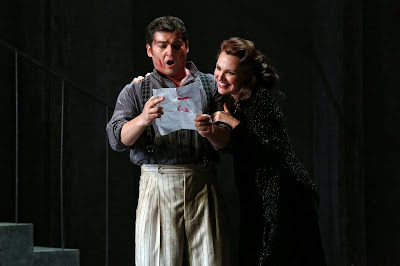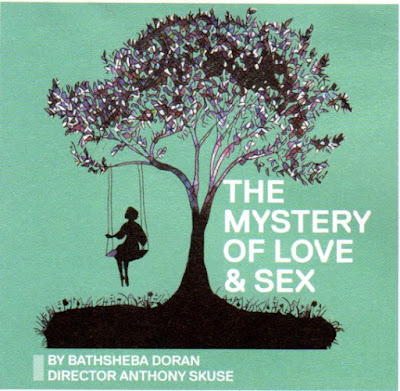Restless Giant: Changing Cultural Values in Regional Australia by
Lindy Hume. Platform Paper No 50, Currency House, February 2017.
Commentary by
Frank McKoneFebruary 23
“The Regional Australia Institute, the Canberra-based independent research and advocacy body for regional Australia, uses the following definition in which Darwin and Hobart would count as regional centres:
"Regional Australia includes all of the towns, small cities and areas that lie beyond the major capital cities (Sydney, Melbourne, Brisbane, Perth, Adelaide and Canberra)."This definition will not satisfy everyone it seeks to encompass”, writes Lindy Hume.
I suppose I’m pleased that Canberra is nowadays a “major” capital city rather than the “regional centre” which was how it looked to me from my acting/directing role in distant Broken Hill Repertory Theatre, with Canberra Repertory Theatre and Canberra Philharmonic Society vaguely in my sights in 1965. So I went to Sydney for a bit of academic study, then moved out of Sydney to the Wyong Drama Group 1967 to 1973.
Finally arriving in Canberra revealed, in 1974, Reid House from which new theatre alongside Rep and Philo (including Tertiary Accredited Drama in the secondary school system by 1976) grew into a myriad of often short-lived companies and the complex scaffolding of today, incorporating Queanbeyan’s The Q and all the participants in the annual CAT Awards from an ever-increasing region. This year the CATs were awarded in Dubbo, some 400 kilometres away, and the company has dropped its original title – Canberra Area Theatre awards – in favour of just plain CATs. With an 800 kilometre diameter, surely this makes Canberra and its region “major”, now. With the blessing of T S Eliot no doubt.
But there’s still a difference between Canberra and the others: Brisbane, Sydney, Melbourne, Adelaide and Perth. Though our population is reaching towards 400,000, we still do not have the same kind of top quality tertiary level drama or dance training institutions here (despite many valiant attempts) – and even the School of Music has struggled, in my view ever since it was taken over by the Australian National University. Nor do we have a long-term full-time fully professional theatre company, despite the past successes of the now-defunct theatre-in-education The Jigsaw Company (1976 – 2014) among several others with shorter lives, such as Women on a Shoestring and the recently formed Aspen Island Theatre Company. Maybe Canberra fits somewhere between those other capitals and Hobart and Darwin.
Of course, in visual arts and literature, and even in movie-making in recent times, Canberra has been one of the giants, but our theatre is still very much in the restless stage. Hume refers to Lyndon Terracini’s
A Regional State of Mind—Making art outside Metropolitan Australia saying “it was, and ten years on is still, an inspiring and prescient read”. Terracini “celebrated what is now widely known as the Culture of Place, and invited us to imagine a great Cultural Pyramid whose ‘summit’—Australia’s professional companies— is supported by a broad base, the grassroots community activity flourishing across regional and urban Australia. I revisit these concepts in the context of the new leadership, inspiration and innovation I see all around me, and the rise of a new, more assertive ‘regional state of mind’."
And, in fact, we could easily say that Hobart and Darwin in some ways seem more assertive than Canberra.
But it’s also true that Hume notes the leadership and inspiration of one-time Canberrans, such as Elizabeth Rogers who was Director of Canberra Arts Marketing for more than six years and is now CEO of Regional Arts NSW, and Lyn Wallis who was Artistic Director of The Jigsaw Company for four years, and now runs HotHouse Theatre in Wodonga. Also quoted is someone I might call a Canberra original restless giant: “Mikel Simic, better known as the flamboyant Mikelangelo of Black Sea Gentlemen fame, recently relocated from Melbourne to the high country outside Cooma:
“
It’s not airy fairy to say that the natural environment changes the way you function as a human being, it has an effect on you as an artist. The river, the sky, are characters in my work, they’re more than just a background setting.”
Lindy Hume has also made the move from big city life as “one of Australia’s prolific festival and opera directors” to the far south coast near Cobargo, “where I served for several years as Chair of South East Arts”, saying “I wanted to write on this subject because I sense a moment of shimmering potential, an alignment of the great forces of Australia’s psyche—our regional and our city cultural identities. It’s a vast and challenging notion, and it’s thrilling to consider.”
It’s her enthusiasm for changing the perspective of artists (not only theatre practitioners who are her main interest) away from the conventions and expectations of artistic life in cities like Sydney or Melbourne that is the key to this Platform Paper. The point was made by poets like Henry Lawson and Banjo Paterson more than 100 years ago and the distinction between the ‘big smoke’ and ‘the bush’ is still a standard concept in Australians’ thinking, even if we do use ‘metro’ and ‘regional’ instead.
And I still find myself remembering, as I review shows in Sydney’s Roslyn Packer Theatre, at Belvoir, and even at the more local small theatres like Eternity Theatre in Darlinghurst or Ensemble Theatre in Kirribilli, the community spirit of searching all over town for the correct Japanese sword to use in Broken Hill Rep’s
The Teahouse of the August Moon, and finding the exact model of Jeep way down in an open-cut mine (with a loose gear lever and no brakes – but I still drove it up and onto the stage). While nowadays I’m impressed not only by the acoustics and sightlines of The Q in Queanbeyan, but also by the friendly, indeed homely atmosphere there, even compared with nearby Canberra.
In the end, Lindy Hume’s essay is not just a bureaucratic plea for better funding for the arts in regional areas (though she even manages to praise ex-Arts Minister Brandis: “One of the most highly valued initiatives is the Federal Government’s Regional Arts Fund (RAF): $12.5m over four years targeted ‘to activities that will have long-term cultural, economic and social benefits.’ RAF is delivered on behalf of the Federal Ministry for the Arts by RAA and its member state organisations. Another is Catalyst, the controversial Brandis-created funding instrument, which has proven an unexpected boon to regional artists, with 37% of $23 million ($8.5 million) of total grant monies awarded to regional projects as at May 2016. Time will determine the impact and longevity of this new funding avenue.”)
The essence of her contribution is to say, of living in the country:
“It’s where I come for nourishment and escape from the ambient noise of the world. My experience, and that of many Australian artists in my community, reflects Don Watson’s, in his book
The Bush: travels in the heart of Australia:
"As much as the grime, in the city there is the din of predictable opinion, especially one’s own opinion, which week by week, year by year, becomes a sort of metronome sounding at some distance from whatever remains of a sense of actual self.“In summary, the diversity of my experience has created a framework for reflection. I write as an artistic director, an advocate for excellence in the arts in regional Australia, but primarily from the personal perspective of an artist who chooses to live and work in regional Australia. Mine is both a passionate appeal and a challenge, in this time of cultural flux, to explore the abundant possibilities of imagining our national cultural landscape in a different way, as an integrated metro-regional ecosystem that truly reflects the adventurous and enterprising contemporary identity of ‘the heart of Australia’.”
So perhaps that’s where Canberra fits: as a metro-regional or in the latest vernacular, announced at today’s launch, ‘
hyper-local’ ecosystem reflecting the adventurous and enterprising contemporary identity of the heart of Australia.
I certainly hope so. The launch here today, with Julian Hobba (Artistic Director, Aspen Island Theatre Company); Mikelangelo (alone, without the Black Sea Gentlemen); Kate Fielding (Director, Regional Arts Australia); Karilyn Brown (Chief Executive Officer, Performing Lines - producers of new and transformative performance) joining Lindy Hume for a panel discussion, which went 45 minutes over the allotted time, was very encouraging.
Perhaps the essential theme was that ‘hyper-local’ means that excellent work should flow around the nation beyond its local place of generation, a new structural network of artistic creation rather than the pyramid of old.


















